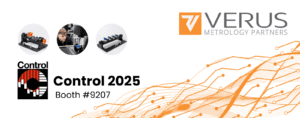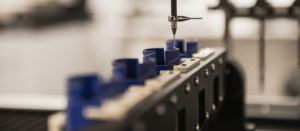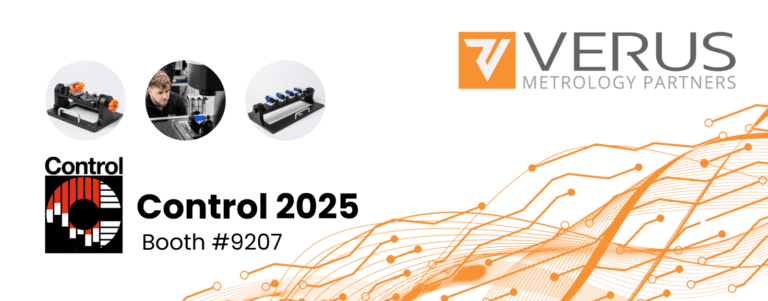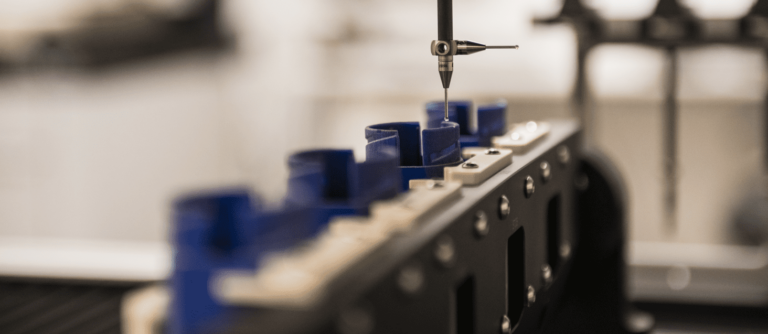If it isn’t broke, why fix it, particularly when we are talking about something as complex, highly regulated, and safety critical as medical device metrology and inspection processes? Increasingly, however, traditional inspection processes are holding back progress in MedTech manufacturing facilities because they lock-in bottlenecks that cost time and money. From this perspective, something is broken, so is it time to invest in automated metrology and inspection solutions?
When you look at the improvements that can be made through modern inspection technologies, processes, and methodologies, it becomes clear the benefits of automation now outweigh the risks. Those benefits include reductions in human error, redistribution of resources, improved throughput, and enhanced productivity. Therefore, now is the time to start investing in automated metrology and inspection solutions.
Before you do, though, a number of important factors should be considered to ensure you get maximum returns from your metrology automation investments. All of the following will be covered in this blog:
- The current reality and future outlook of automated metrology
- why you should automate metrology and inspection in your medical device production facility
- The benefits that are possible
- The challenges that exist
- How to overcome those challenges
The Current Reality in Relation to Automated Metrology and Inspection
Manufacturing processes in the life sciences sector continuously evolve as manufacturers seek to improve productivity, competitiveness, product quality, compliance, and efficiency in the Industry 4.0 era.
This push for improvement in manufacturing has led to increased levels of automation, with enhanced integration of equipment, machines, and software systems. You will have seen the benefits of automation on your production lines – benefits that include higher throughput and access to better data, for example.
In many medical device manufacturing facilities, however, quality functions, including metrology and inspection processes, remain largely semi-automated. Fully manual processes are not unusual either, although there is typically some level of automation through advanced CMM equipment and inspection software. Even with this automation, metrology in the medical device industry is still largely operator controlled.
Looking to the Future
It remains important to continue investing in the automation of your production lines, as well as automation in other parts of your business, as you work towards achieving your digital transformation productivity, efficiency, and competitiveness goals.
It is now equally important to invest in automated metrology and inspection solutions because of the benefits outlined below.
Before that, though, what does metrology and inspection automation look like?
Three Elements of Metrology Automation
There are three main elements in metrology automation that can apply to all facilities and lines:
- Moving inspection closer to the production line, with in-line inspection being the ultimate goal, where it is feasible
- Minimising the number of steps in the metrology and inspection process
- Minimising operator involvement in metrology and inspection
We’ll delve into the benefits in more detail below, but there is another factor to highlight first.
Despite Uncertainties in the Industry, The Technologies Exist
Up until now, there has been a level of scepticism in the medical device industry about the capabilities of automated metrology solutions within medical device manufacturing environments. However, technologies and advanced solutions currently exist that make automated metrology and inspection a realistic possibility on medical device production lines.
Take CNC metrology solutions. In the past, these types of systems had limited flexibility, but modern solutions can be quickly updated when a process or product is changed.
Furthermore, vision measurement solutions, robotics, and auto-rotational multi-station fixturing have all advanced considerably over recent years.
Even on highly regulated, high-speed, and high-volume production lines (such as in medical device manufacturing facilities), existing technologies and solutions make it possible to significantly increase automation in metrology and inspection processes.
Why You Should Invest in Metrology Automation
That brings us to the main issue – why should allocate part of your budget to invest in automated metrology and inspection solutions? The main reasons can be split into two categories:
- Inspection and quality benefits of automation – eliminates human error, faster inspection processes, metrology and inspection can take place in real-time, increases inspection frequencies, improves inspection repeatability, reduces your reliance on operators, improves the allocation of resources, automates data collection and storage, and improves productivity in the quality department.
- Manufacturing and operational benefits of automation – reduces the risk of producing bad products, enables predictive decision-making, minimises downtime and maximises OEE, enables a more effective use of data, improves product quality and patient safety, improves lean manufacturing capabilities, reduces costs, and delivers a rapid return on investment.
9 Inspection and Quality Benefits of Automation
1. Eliminate Human Error
Whatever level of automation you implement in your metrology and inspection processes, rates of human error will reduce. With full automation, you can eliminate human error. This includes faults missed as well as rejecting components or products that are not faulty.
2. Faster Inspection Processes
Machines can work faster than people, so increasing automation will speed up inspection processes.
Going as far as in-line inspection can accelerate the process to match the speed of your production line.
3. Metrology and Inspection Can Take Place in Real-Time
Automated technologies and solutions can move metrology processes from locations that are offline to being near-line or in-line. A combination of advanced metrology solutions and closer proximity to the production line enables real-time inspection.
4. Increased Inspection Frequencies
With faster inspection processes taking place closer to the production line, you can increase inspection frequencies. Inspecting a higher proportion of products in a batch will produce more accurate results.
5. Improved Repeatability by Reducing Human Error
The more manual the inspection process, the more challenging it is to achieve maximum repeatability. The reverse is also true, as increased automation significantly improves inspection repeatability.
One of the main reasons for this is the removal of operators from most, if not all, of the inspection process. With automation, operators are replaced by machines that don’t deviate from validated processes or make procedural mistakes
6. Reduce Reliance on Operators
With automated inspection, there is less of a reliance on operators which helps to enhance the efficiency of metrology processes.
7. Improves the Allocation of Resources
Without automated metrology and inspection processes, your quality team will inevitably spend a considerable percentage of its time on mundane and repetitive tasks. They are essential tasks, for sure, but they are not value-adding.
Automated metrology and inspection solutions allow your team to move away from these repetitive, manual tasks. This leads to an empowered quality workforce that has the tools to innovate, improve, and optimise.
8. Automates Data Collection and Storage
Automating data collection and storage helps with compliance, as it improves your ability to adhere to ALCOA+ principles, i.e., that data should be attributable, legible, contemporaneous, original, accurate, complete, consistent, enduring, and available.
9. Improves Productivity in the Quality Department
Overall, productivity in the quality department will improve, as the team you have today will be able to do more and do it better.
8 Manufacturing and Operational Benefits of Automation
1. Reduced Risk of Producing Bad Products
Automated inspection processes can identify tolerance deviations faster than manual processes. They can even identify issues before the problem occurs, allowing corrective action to be taken. This prevents bad products from being produced, so reduces waste and helps maintain other production targets, including throughput.
2. Predictive Decision-Making
The above point about identifying product quality issues before they occur is an example of the predictive decision-making capabilities that automated inspection solutions can bring to your operations.
3. Minimise Downtime and Maximise OEE
By minimising the number of bad products produced, you can improve OEE and minimise the delays that occur when batches have to be re-run.
4. Enables a More Effective Use of Data
Automated inspection processes will produce more data, and that data will be more accurate. You can then use this information for a range of purposes, from enhancing oversight and product quality to improving upstream production processes.
5. Improves Product Quality and Patient Safety
Improving product quality is worth mentioning in isolation, as quality improvements will give you a competitive advantage. Patient safety will also be enhanced.
6. Improves Lean Manufacturing Capabilities
As lean manufacturing is about eliminating the steps in a process that are not value-adding, automated inspection is a perfect fit. Metrology automation solutions add value to inspection processes (thereby enhancing lean manufacturing capabilities) by improving accuracy and reducing waste and inefficiency.
7. Reduces Costs
Automated metrology and inspection solutions can help reduce costs in three main areas:
- Quality resources, as operators will no longer be required for repetitive, manual tasks
- Equipment costs, as there are often more cost-effective alternatives to high-spec and expensive CMM machines
- Waste, as your production lines will produce fewer faulty batches
8. Delivers a Rapid Return on Investment
As the advantages of automated inspection and metrology are so substantial, you can expect a return on investment almost from day one of implementation.
Challenges Of Increased Metrology and Inspection Automation
There are several challenges that can arise when increasing levels of automation in metrology and inspection processes, including:
- Convincing senior management and other stakeholders to implement a new metrology and inspection process that might work, but which is unproven locally within your facility
- Overcoming the apprehension and reluctance to change a metrology and inspection process that currently works, even if it is inefficient
- Uncertainty about the availability of the expertise required to develop and implement the new solution
- Concern there aren’t the in-house resources available to support the new technology
- Concern about the learning curve for internal resources
- Uncertainty in relation to integration and the problems that might arise
- Concern about the ability and accuracy of real-time inspection given the materials used in medical device manufacturing and the nature of components
How to Overcome the Challenged of Increased Automation
All the above challenges can be overcome by working with a partner that has experience developing and implementing automated metrology and inspection solutions, particularly in medical device manufacturing facilities. This includes experience in the following areas:
- Carrying out GAP assessments on current inspection processes
- Identifying the best solution based on business and production line requirements, as well as the challenges the new inspection process aims to overcome
- Business case development for new and upgraded metrology and inspection processes
- Validating new metrology and inspection processes in accordance with business needs and compliance requirements
- Achieving rapid returns on investment
Conclusion: Stay Competitive With Automated Metrology and Inspection Solutions
Manufacturers that are keeping up with the latest Industry 4.0 and Quality 4.0 best practices will emerge stronger, more productive, and more competitive. Automated metrology and inspection are part of this equation.
The automation of processes is taking place across all facets of business. The quality function in a medical device manufacturing facility should be no different given the inspection, quality, manufacturing, and operational benefits that automation can bring. Therefore, the time to start increasing inspection automation in your facility is now.
Not clear on where your facility stands in relation to Quality 4.0? You can read more on the topic here.







